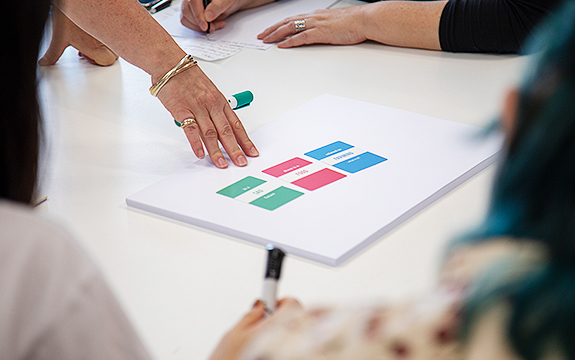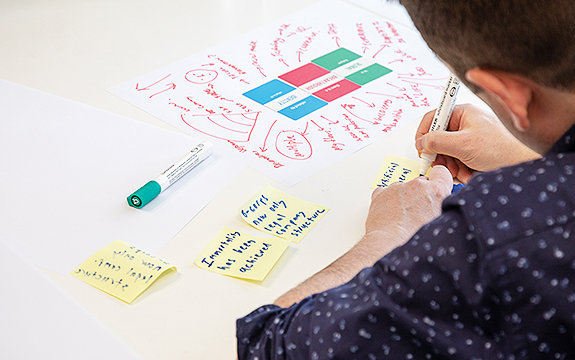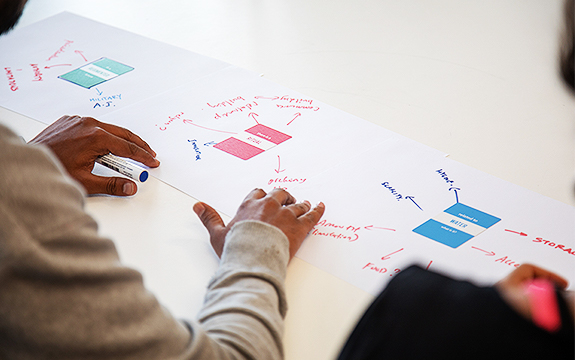Designing for Change encourages strategic foresight through play

In Summary
- Designing for change needs strategic foresight and capacity for futures thinking
- Design and designers making sense of change to create alternative futures
- Game demonstrates the connection between design and futures
Hosted by Bridgette Engeler, Course Director - Master of Design, the Designing for Change workshop at Swinburne was part of the Melbourne Design Week program. Workshop participants played a game called, The Thing From The Future, created by Dr Stuart Candy and Jeff Watson of Situation Lab.
Through play, they were introduced to the basic principles of strategic foresight and futures thinking. The Thing From The Future is an award-winning immersive game that challenges players to imagine and design objects from a range of alternative futures.
“The workshop was a lot of fun. The Thing From The Future fosters creativity and imagination, but more importantly requires players to have a conversation about the kinds of futures and artefacts we want in those futures. Participants worked in groups of five to respond to the ‘design challenge’ in the cards that were dealt,” explains Ms Engeler.

Responding to design challenges dealt by The Thing From The Future cards
Ms Engeler says designers should be able to make sense of change and direct their skills and knowledge to creating multiple alternative futures. In order to design future-focused products and services in a continuously changing world, designers need to understand strategic foresight and to have capacity for futures thinking.
Participants started by considering multiple possible futures. They outlined the kinds of futures that the thing-to-be-imagined might come from. They discussed the object they were designing and how it fitted into those futures and looked at the emotional reactions it might spark.
“The game demonstrates the connection between design and futures, and how this shapes emotion, interaction and activity in our lives,” says Ms Engeler.

Considering multiple futures at Designing for Change workshop
“Designers are complicit in creating the condition of our world. The Thing From The Future helps people understand how everything is connected. Design has a key role to play in transitions to more sustainable futures. In the workshop, we used the Harman Fan method to make that connection clearer. This is not just through shifts in material culture but by understanding the interconnectedness of social, economic, political and natural systems when talking about ‘problem-solving’ with design,” she explains.
“Futures thinking is a tangible and useful way to build this understanding or capacity in designers and design practice. Making futures thinking explicit in design aligns both the process and its outcomes with the values, needs and societal expectations, and its anticipated futures,” says Ms Engeler.
“If we’re using the term strategic design, futures thinking should be informing the surrounding design and innovation processes. It increases designer agency, and supports goals such as sustainability and longevity. It enables the design of products and services in a system that deliver sustained value as the world changes.”
Workshop participants created remarkable headlines from possible futures and quickly realised that excitement about new technologies must be tempered with healthy scepticism. They discussed the challenges of AI, transhumanism, immortality and fundamental issues of human security.
“The workshop activities demonstrated how design gives structure and form to futures thinking and brings to life images of alternative futures,” says Ms Engeler.

